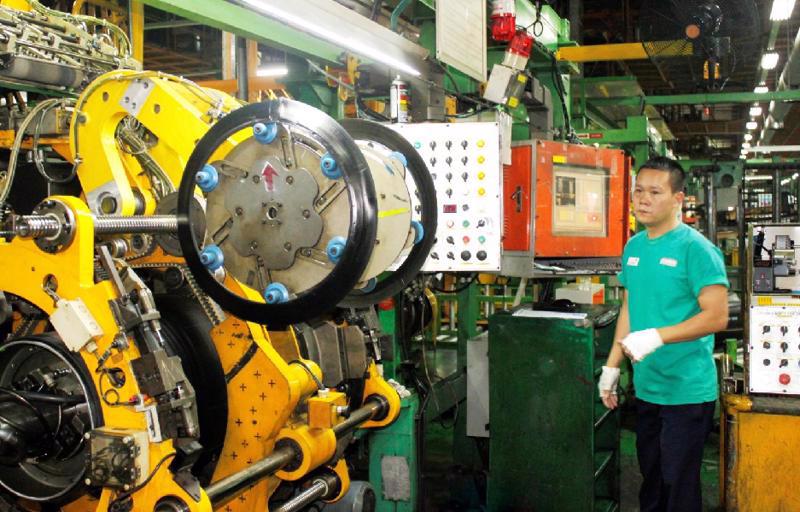Manufacturers in Vietnam continued to struggle in the face of weak market demand as the second quarter of the year drew to a close, according to an S&P global report released on July 3.
Output and new orders fell again, with the former in part reflecting power outages as a result of the heatwave affecting the country.
The weak demand environment led firms to scale back staffing levels and purchasing activity, while prices fell. A lack of pressure on capacity resulted in the second-largest shortening of suppliers’ delivery times on record (since March 2011).
Vietnam’s Purchasing Managers’ Index (PMI) posted below the 50.0 no-change mark for the fourth month running in June, signaling a sustained deterioration in the health of the sector.
At 46.2, up from 45.3 in May, the latest reading points to a solid decline in operating conditions. Reports of demand weakness were prevalent throughout the latest survey, with deteriorating market conditions the primary cause of the latest reduction in new orders.
Total new business was down for the fourth successive month, and while at a solid pace was nonetheless much softer than that seen in May. New export orders decreased more quickly than total new business amid declining demand in international markets. Demand weakness fed through to a further reduction in manufacturing production, while there were also a number of reports that power outages due to the heatwave in Vietnam had restricted output.
Production was down across each of the consumer, intermediate, and investment goods categories, with the overall pace of reduction remaining solid. The fall in new orders meant that backlogs of work continued to decrease, while manufacturers responded to reductions in workloads by lowering their employment levels and purchasing activity.
Employment was down for the fourth consecutive month, and at a marked pace that was stronger than that seen in May.
Purchasing activity was likewise reduced for the fourth month running, albeit only marginally at the end of the second quarter.
The reduction in input buying and lower new orders led to a drop in stocks of purchases. Stocks of finished goods also declined as production volumes eased, the second successive month in which this has been the case.
The weak demand environment acted to ease pressure on prices in June. In fact, input costs decreased for the second consecutive month, and at a solid pace that was the sharpest since April 2020. Falling input prices meant that firms had some leeway to reduce their own charges in a bid to stimulate demand. Output prices were down for the third month running, with the latest cut to charges the most pronounced in just over three years.
As well as reducing pressure on prices, the lack of demand throughout the manufacturing sector also led to spare capacity in supply chains. Suppliers’ delivery times shortened to the greatest extent in almost 12 years, and to the second largest degree since the survey began in March 2011.
The difficulties for firms signaled across a range of the June survey’s indicators meant that business confidence remained relatively muted, despite picking up from May’s six-month low. Manufacturers were still optimistic that output will increase over the coming year, however, amid hopes for a recovery in market demand and the securing of new customers.
“The latest S&P Global Vietnam Manufacturing PMI paints a bleak picture of conditions in the sector at the end of the second quarter, with a lack of demand the key issue facing firms,” said Mr. Andrew Harker, Economics Director at S&P Global Market Intelligence. “We are now seeing sustained reductions in output, new orders, employment and inventories as a result. Power outages in Vietnam due to the heatwave added to firms’ problems.”
“Meanwhile, prices are falling and suppliers’ delivery times shortened to a near record extent in June. While some easing of the severe price and supply pressures seen in recent years was required, these trends are now largely reflective of demand weakness and so are likely to be looked upon less positively than had been the case in recent months. All in all, the sector is in need of a demand boost, and so developments in the global manufacturing sector will be watched closely for signs of revival.”









 Google translate
Google translate